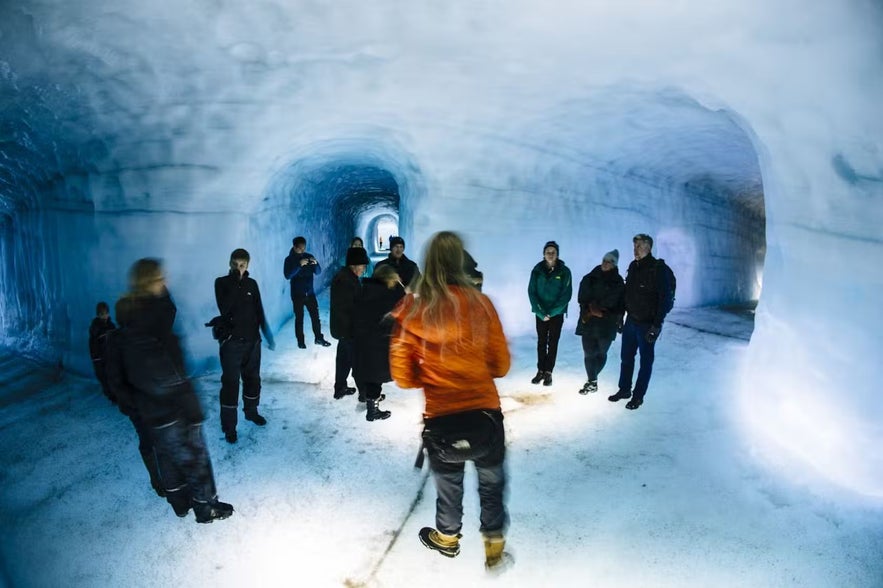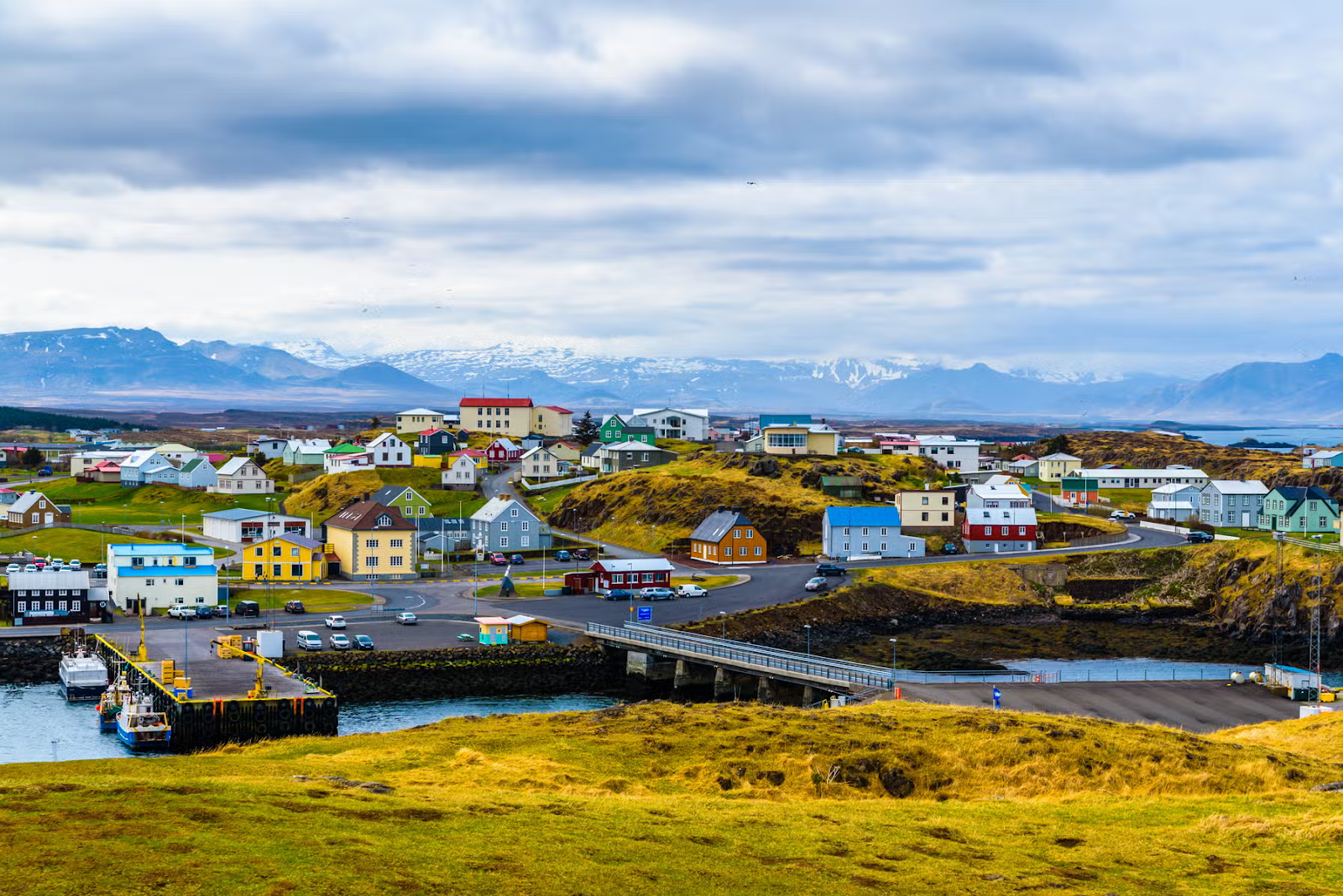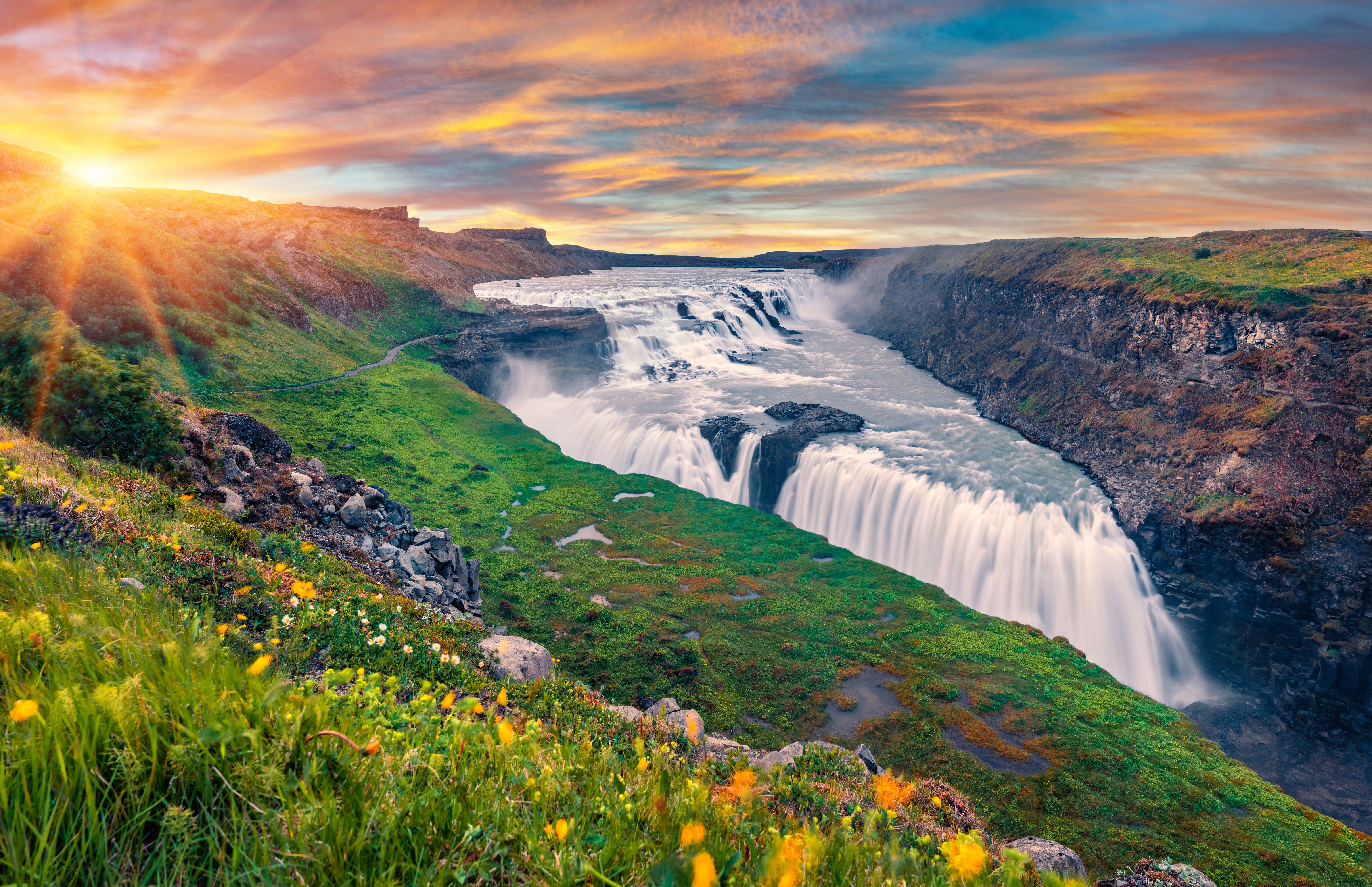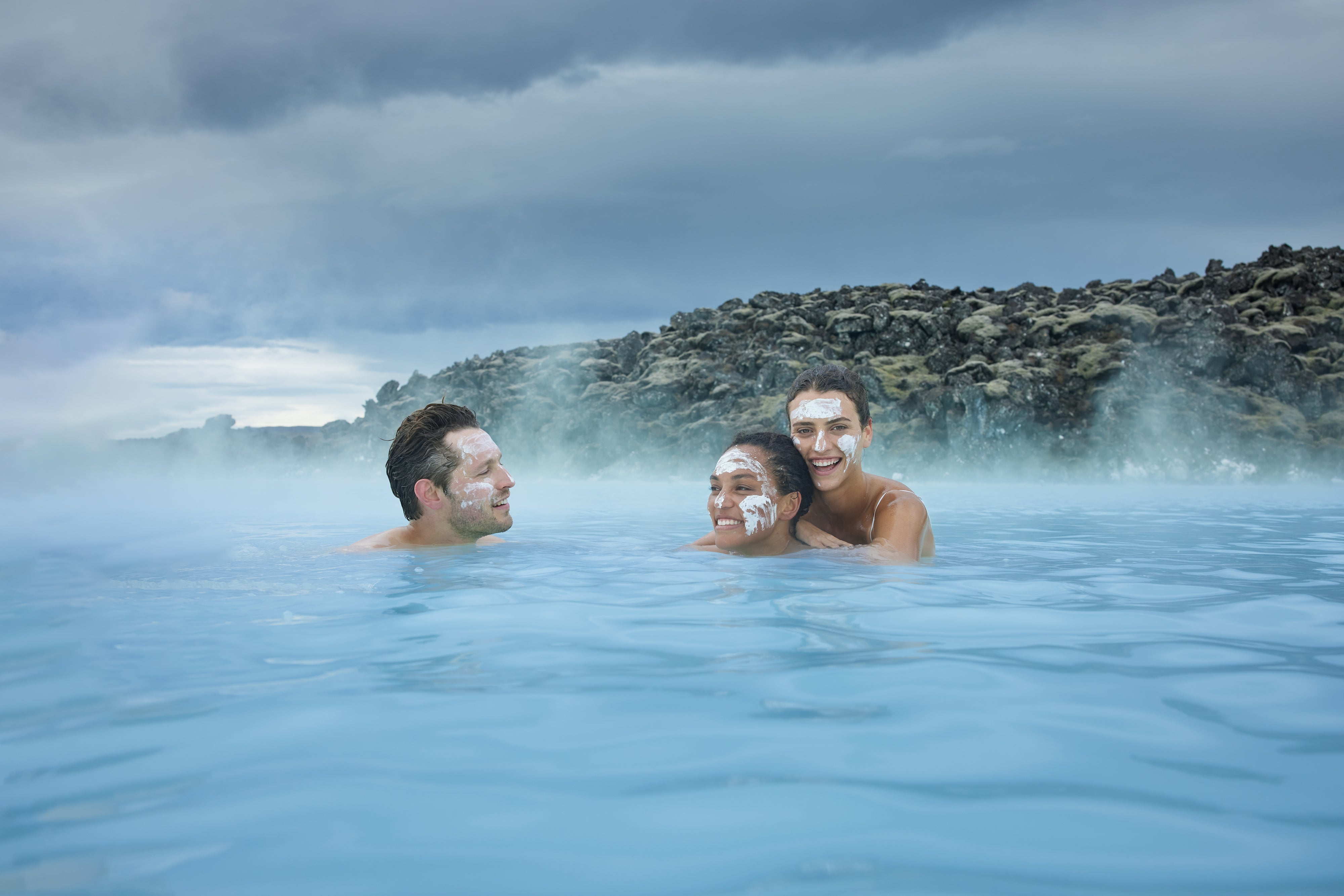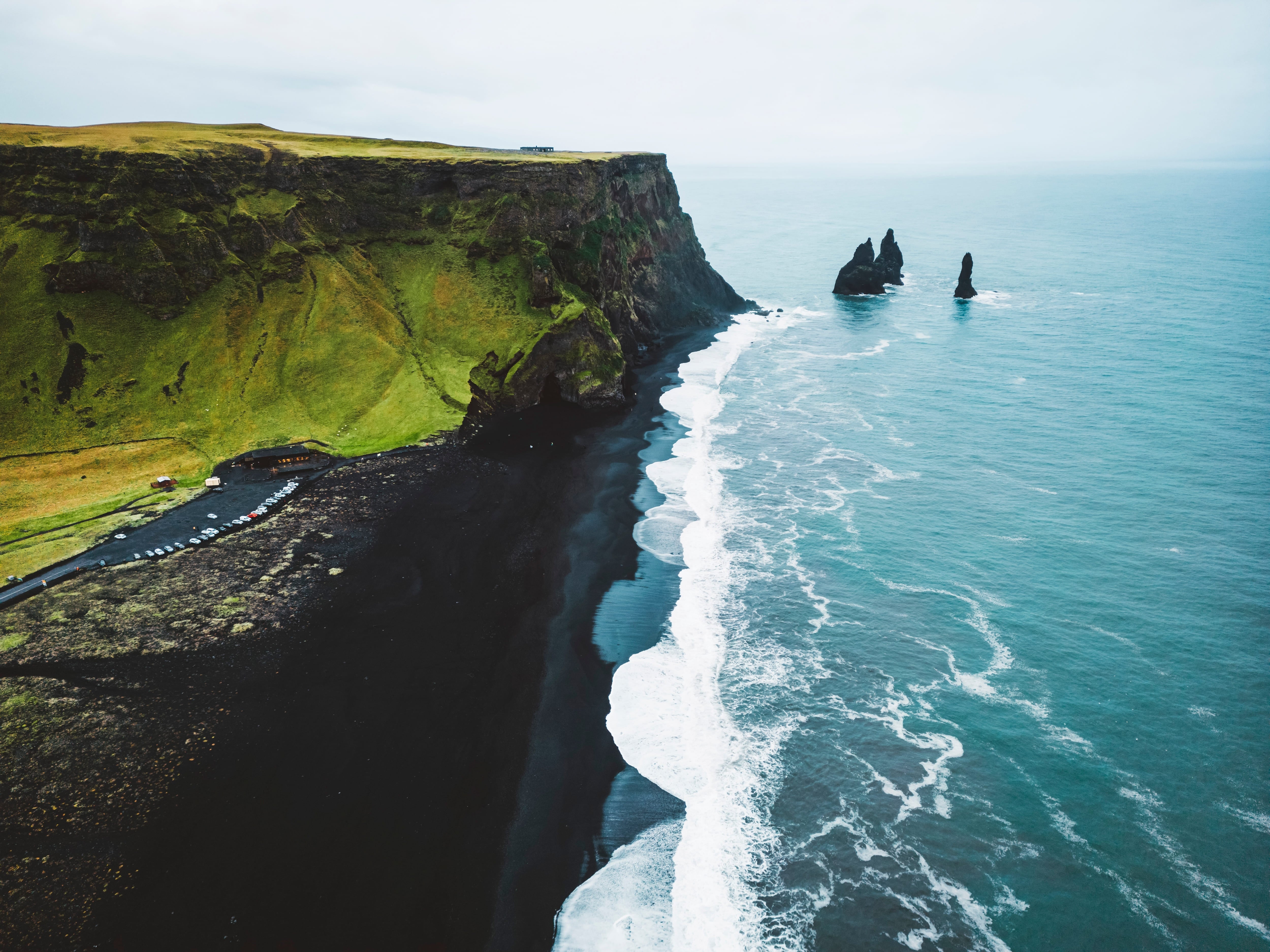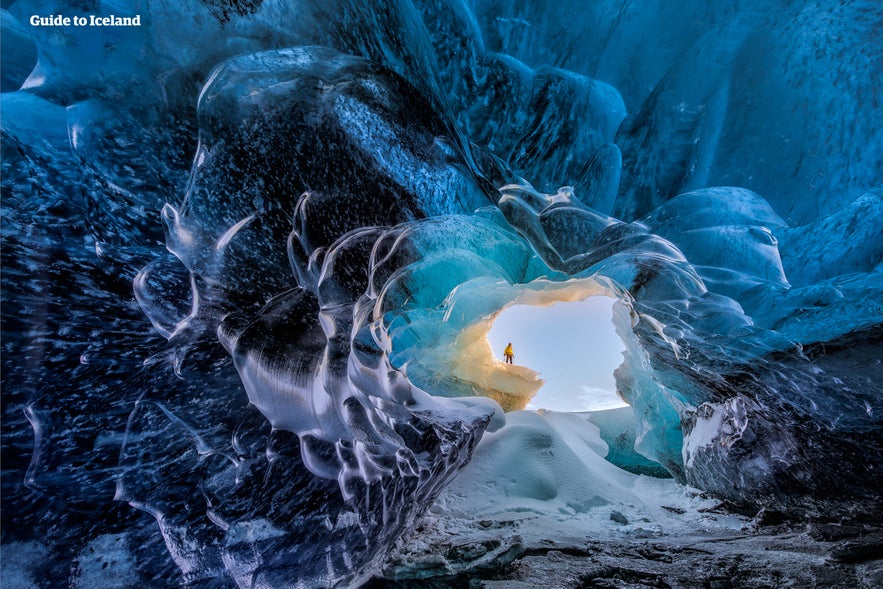
Discover what to wear on ice cave tours in Iceland for a magical winter adventure that keeps you warm, safe, and comfortable. Learn how to layer properly, pack the right gear, and fully enjoy this once-in-a-lifetime glacier experience.
Ice cave tours in Iceland are a must-do adventure for anyone visiting the country. These tours let you explore glaciers up close, marvel at vivid blue ice, and discover extraordinary formations that create unforgettable sights.
Why You Can Trust Our Content
Guide to Iceland is the most trusted travel platform in Iceland, helping millions of visitors each year. All our content is written and reviewed by local experts who are deeply familiar with Iceland. You can count on us for accurate, up-to-date, and trustworthy travel advice.
Tour operators usually handle logistics and provide safety equipment, and there are plenty of options for ice cave tours from Reykjavik, such as the Into The Glacier Ice Cave Tour with Hraunfossar Waterfalls. Another popular departure point is Jokulsarlon Glacier Lagoon, where you can join the top-rated Crystal Blue Ice Cave Tour in Vatnajokull Glacier during your self-drive adventures in Iceland.
To get the most out of your experience, it’s essential to prepare with the right clothing. Layering properly is key to staying warm, dry, and comfortable inside the glacier.
In this article, you’ll find a complete guide on what to wear on ice cave tours in Iceland, including clothing tips, layering strategies, and packing essentials. By the end, you’ll know exactly how to dress for your adventure so you can focus on enjoying the incredible beauty of Iceland’s ice caves.
Must-Know Tips for Ice Caving in Iceland
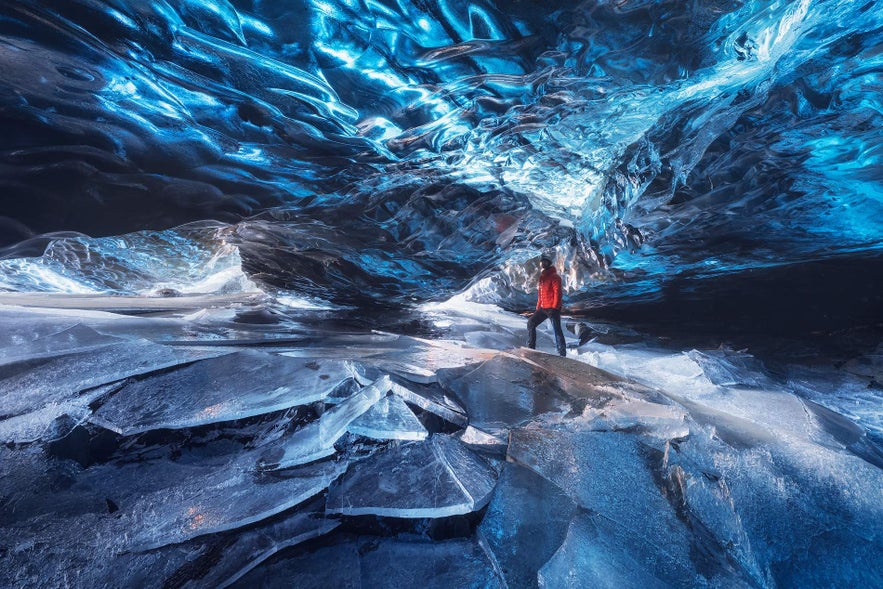 In addition to understanding what to wear on ice cave tours in Iceland, these tips will help you make the most of your glacier adventure.
In addition to understanding what to wear on ice cave tours in Iceland, these tips will help you make the most of your glacier adventure.
-
For ice caving in Iceland, plan your visit between October and March to experience the most stable and vibrant ice caves.
-
Consider summer options like the Katla Ice Cave or Into the Glacier tunnel if visiting outside winter.
-
Choose your departure wisely. Reykjavik is convenient for day trips or short stays, while Jokulsarlon Glacier Lagoon offers full-day glacier adventures and is ideal for travelers exploring Iceland by self-drive.
-
Dress in layers to stay warm, dry, and comfortable inside the glacier.
-
Confirm safety equipment with your operator. Helmets and crampons are usually provided, but it’s best to double-check before your tour.
Layering and Clothing Essentials for Ice Caving
Proper clothing is crucial when exploring Iceland’s ice caves, as relying on a single piece of outerwear won’t keep you comfortable. The key is to layer your clothing!
You'll want to start with a soft base layer and insulated trousers, as they will help regulate body heat and keep you warm! Look for items such as a soft merino wool shirt and matching pants, as your choice of material can matter greatly. Thick woolen or thermal socks are also a must, as you don't want to let freezing cold toes ruin your experience.
Then you'll want to add mid layers. A quality fleece sweater or light sweater is perfect for this, and you'll want to add shell pants that are fully windproof and waterproof. If you're hiking during the height of winter, you'll also want to add another insulating layer, like a fleece vest.
On top, you'll need a good shell layer to lock in heat and protect you from water dripping from the ice cave ceiling. It's essential that your jacket of choice is fully wind and waterproof, such as a good down GORE-TEX jacket. Trusted Icelandic brands like 66°North offer reliable outerwear built for the harsh conditions.
To complete the outfit, add a warm beanie or hat that covers your ears well and warm, waterproof winter gloves.
For your feet, you must have good hiking boots with a sturdy, stiff sole. On top, you'll need to add sturdy crampons or spikes, which the tour operator can sometimes provide! We do recommend investing in some or renting crampons on Iceland's largest travel marketplace, as they'll also be very useful when exploring the rest of Iceland during winter.
- Check out: History of 66°North: Keeping Icelanders Warm for a Century
- See also: Iceland's Weather, Climate, and Temperature Year-Round
Special Equipment for Ice Caving in Iceland

Knowing what to wear on ice cave tours in Iceland is just as important as bringing the right equipment to ensure a safe and enjoyable experience. You can generally expect that your chosen tour operator will provide most, if not all, of it, but it's good to keep in mind!
Firstly, a sturdy helmet is essential for protection against potential falling ice or low-hanging cave ceilings. It's a basic safety measure that can't be overlooked and is generally provided by your tour operator.
Additionally, carrying a headlamp or a flashlight is crucial as the caves can be dark, and having your own light source will help you see the path ahead and fully appreciate the cave's features. It can also be very helpful when navigating the winter darkness.
Next, unsurprisingly, ice caves are slippery, as they're quite literally just a bunch of ice. This makes crampons or ice cleats a necessity. If you don’t want to invest in heavy-duty ones for your trip, check whether your tour operator provides them or consider renting crampons. These attachments to your boots will provide the necessary grip to help you navigate the icy terrain confidently.
Lastly, don't forget a waterproof bag to keep your camera and other personal items dry. You'll likely want to capture the beauty of these ice caves, so protecting your equipment from damp conditions is important!
What to Wear on Ice Cave Tours in Iceland by Season
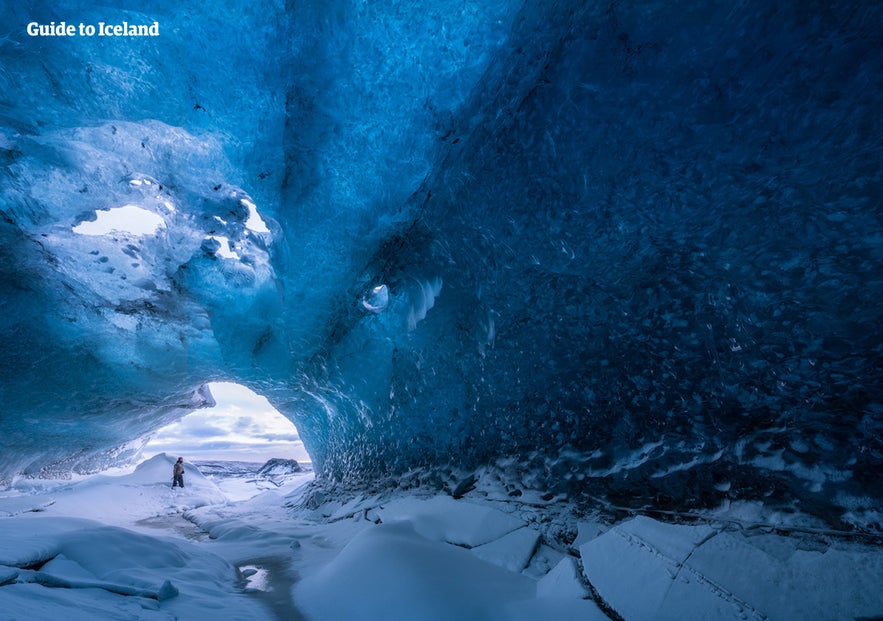 Visiting ice caves in Iceland is an unforgettable experience, and the season of your visit will shape both the conditions inside the glacier and what you should wear.
Visiting ice caves in Iceland is an unforgettable experience, and the season of your visit will shape both the conditions inside the glacier and what you should wear.
The majority of ice caves are only accessible during the winter months, so between November and March. This is because temperatures are consistently low enough to ensure the caves are stable and safe to enter, as the ice is less likely to melt, maintaining the structural integrity of the caves!
This makes winter the best time to visit ice caves in Iceland. During the colder months, the caves are also at their most stunning, with the ice displaying vibrant shades of blue that create incredible patterns.
Since temperatures are at their coldest, wearing multiple insulating layers is essential. Think thermal base layers, fleece or wool mid-layers, and a windproof, waterproof shell to stay warm and dry during your adventure.
 Remember, winter in Iceland also means shorter days, so pay attention to the departure time when choosing your tour to maximize daylight hours and enhance your ice cave adventure. Once you’ve sorted out what to wear, the next step is choosing the right ice cave tour.
Remember, winter in Iceland also means shorter days, so pay attention to the departure time when choosing your tour to maximize daylight hours and enhance your ice cave adventure. Once you’ve sorted out what to wear, the next step is choosing the right ice cave tour.
From day trips from Reykjavik to full glacier adventures at Jokulsarlon, here are some of the best options to consider:
-
The Crystal Blue Ice Cave Tour in Vatnajokull Glacier from Jokulsarlon Glacier Lagoon: Join a guided three-hour adventure that takes you by super jeep to the famous Crystal Blue Ice Cave in Vatnajokull Glacier. The tour includes a helmet, crampons, and expert guidance, and it runs from October to April.
-
Solheimajokull Blue Ice Cave & Glacier Hiking Tour: Take a guided 3.5-hour adventure that includes a glacier hike on Solheimajokull Glacier and exploration of the stunning blue ice cave. The tour provides all necessary safety gear, along with a certified glacier guide.
-
The Skaftafell Ice Cave Tour & Glacier Hike: Join a four-hour guided tour combining glacier hiking in Skaftafell Nature Reserve and ice cave exploration in Vatnajokull. Your professional English-speaking guide provides all safety equipment so you can focus on the experience.
-
Into the Glacier Ice Cave Tour with Hraunfossar Waterfalls & Transfer from Reykjavik: Take a full-day guided tour that includes coach pickup, sightseeing at Hraunfossar Waterfalls, and a super jeep ride to Langjokull Glacier. This ten-hour experience combines glacier exploration with some of West Iceland’s top highlights.
-
3-Day Northern Lights & Ice Cave Multi-Day Tour to the Golden Circle, South Coast & Glacier Lagoon: Embark on a three-day guided journey that covers transportation, sightseeing, and activities across Iceland’s most famous regions. The package includes hotel accommodation with breakfast and is available from September to April.
-
2-Day South Coast Winter Trip to Jokulsarlon Glacier Lagoon Crystal Ice Cave: Discover Iceland’s South Coast on a two-day tour that includes accommodation with breakfast and transfers with pickup and drop-off in Reykjavik. This winter-only experience runs from October to April and features a visit to the Crystal Ice Cave.
-
6-Day Northern Lights Self-Drive Tour in the South Coast of Iceland with Ice Caving: Set your own pace with a six-day self-drive itinerary that includes rental car, accommodation, and the freedom to customize your route. Available from September to April, this trip combines ice caving with the chance to see the northern lights.
- Learn all about Iceland's Seasonal Contrasts
- Also, discover Iceland in Winter and the Best Winter Activities in Iceland
Visiting Ice Caves in Summer in Iceland
If you're visiting Iceland in summer, you don't have to miss out. There's one natural ice cave that you can visit year-round, and that is the one in Katla ice cave in the Myrdalsjokull Glacier along the South Coast.
During summer, you'll witness more water runoff and a dynamic change in the cave's interior as the warmer temperatures alter the ice formations. It can be a beautiful and distinct experience compared to winter, especially as you'll have an easier time exploring the rest of Iceland during your summer visit.
While conditions are milder than in winter, the caves remain cold and damp. You may not need as many insulating layers as in winter, but warm base layers and a protective shell are still necessary.
No matter the season, the most important rule about what to wear on ice cave tours in Iceland is to layer effectively. This allows you to adjust to fluctuating temperatures while staying safe, warm, and comfortable inside the glacier.
These tours usually depart from the town of Vik, but summer ice cave adventures are also available from Reykjavík and other parts of Iceland. Here are some of the top options to help you plan your visit and experience these unique glaciers:
-
The Katla Ice Cave Tour from Vik: Take a guided three-hour adventure that includes a super jeep ride from Vik to the base of Myrdalsjokull Glacier. This year-round tour provides all necessary equipment and is suitable for all skill levels.
-
South Coast and Katla Ice Cave Super Jeep Trip from Reykjavik: Join a full-day guided tour that includes pick-up from Reykjavik in a modified super jeep and sightseeing at Seljalandsfoss and Skogafoss waterfalls. This moderately-challenging tour provides crampons, helmets, and all necessary gear, and is available all year.
-
Into The Glacier Ice Cave Tour from Husafell: Explore Langjokull Glacier and Hraunfossar Waterfalls on a guided super jeep tour from Husafell. This family-friendly experience includes all equipment and is available year-round.
-
Ice Caving & Snowmobiling Combo Tour on Langjokull Glacier from Gullfoss Waterfall: Start with a modified super jeep pick-up from Gullfoss Waterfalls and enjoy snowmobiling followed by ice caving on Langjokull Glacier. This beginner-friendly tour includes snowsuits, shoe covers, gloves, and helmets, and runs all year.
Of course, if a real ice cave isn’t on your itinerary, you can still experience glaciers indoors at the Glacier and Ice Cave exhibition at the Perlan Museum. It's one of the top museums in Reykjavik, which includes an award-winning interactive exhibition space and a realistic recreation of an ice cave. You won’t have to worry about what to wear on an ice cave tour!
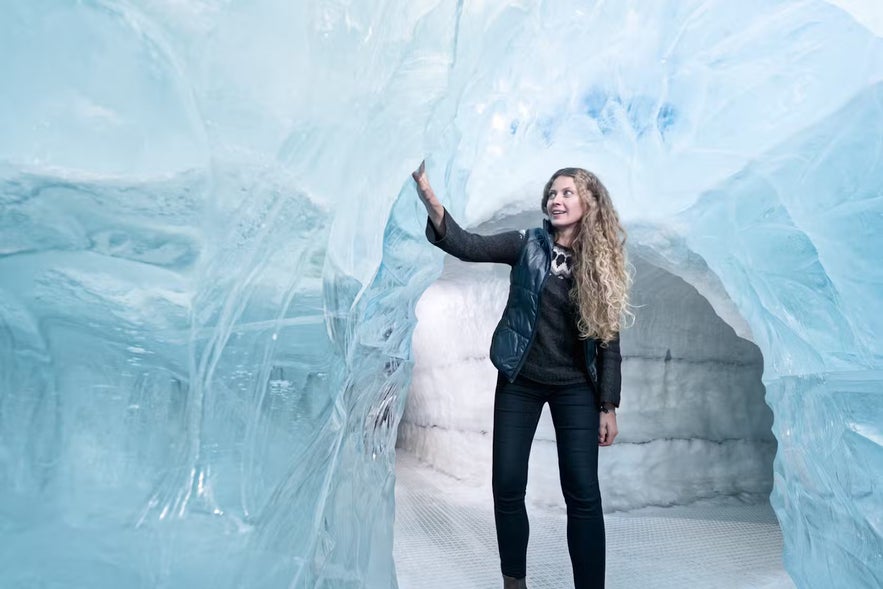
Perlan also has many other things to offer, as you can learn about Iceland's volcanoes and the hidden world of the Icelandic water. There is also the stunning Aurora Northern Lights Show, where you can experience the auroras any time of year, along with an amazing observation deck with the best views of the Capital Region!
FAQs about What to Wear for Ice Caving in Iceland
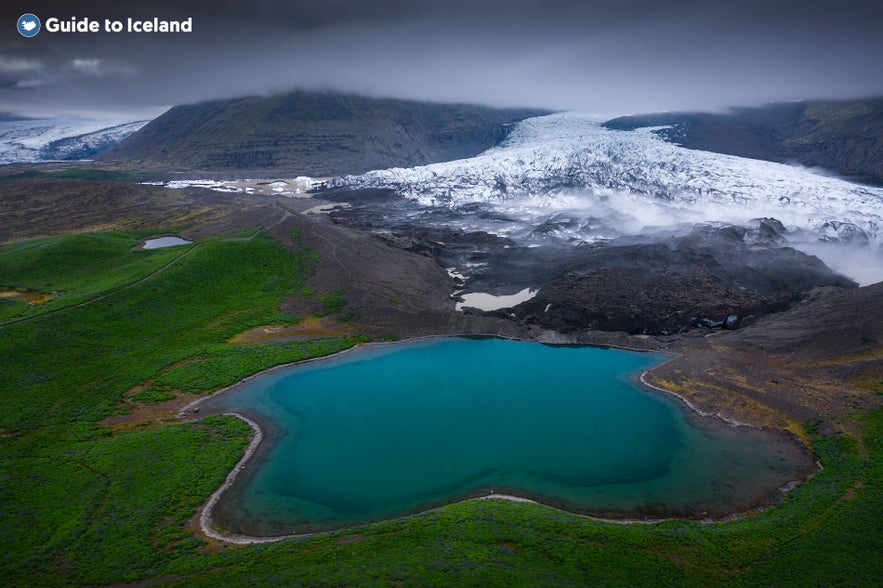 Find the answers to some of the most frequently asked questions about preparing for ice caving in Iceland!
Find the answers to some of the most frequently asked questions about preparing for ice caving in Iceland!
How cold is it inside ice caves in Iceland?
Temperatures inside Iceland’s ice caves typically hover around 32 F (0 C) year-round. In winter, it can feel even colder due to icy winds near the cave entrance, while summer visits are slightly milder but still cold and damp. That’s why it’s essential to wear layered clothing, a waterproof outer shell, and insulated boots to stay warm and comfortable during your visit.
Is ice-caving equipment provided for tours?
Tour operators typically provide necessary equipment, such as helmets and crampons, which are essential for safety. Make sure to confirm with your tour operator whether you need to bring any items with you.
Can I rent winter gear for ice caving in Iceland?
Yes, you can rent outdoor equipment, including hiking boots, jackets, pants, and other accessories.
Do I need any special training for ice caving?
Generally speaking, no special training is required for visiting an ice cave in Iceland, but a relatively good fitness level is recommended.
Can I visit an ice cave in Iceland without a guide?
No, never attempt to go ice-caving or glacier hiking alone in Iceland. You must always go with a guide who knows the area well, as ice caves and glaciers are extremely dangerous for those who aren't fully familiar with the ever-changing nature of the ice. Guided tours prioritize your safety so you can be sure of a pleasant visit without risking your life.
Enjoy The Best Ice Caves in Iceland!
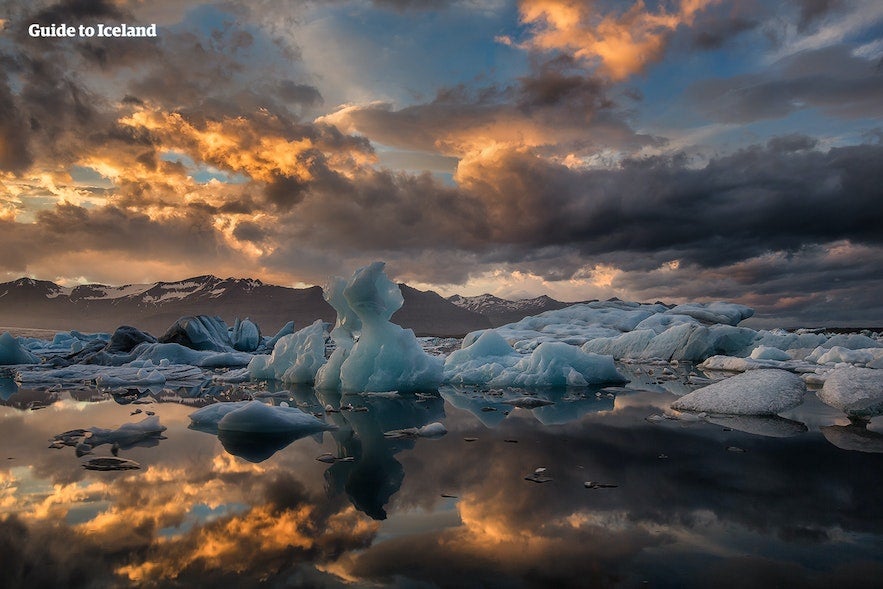 For a seamless adventure, it helps to know what to wear for every season in Iceland. But inside the ice caves, comfort and safety are even more important.
For a seamless adventure, it helps to know what to wear for every season in Iceland. But inside the ice caves, comfort and safety are even more important.
Knowing what to wear on ice cave tours in Iceland and coming equipped with the proper gear ensures you stay warm, dry, and comfortable throughout your icy exploration. This preparation not only enhances your safety but also sets the stage for the adventure of a lifetime!
Which ice cave in Iceland would you like to visit? Are there any other adventures you'd like to experience in Iceland? Have you visited Iceland before? Please share your thoughts and experience in the comments below!

